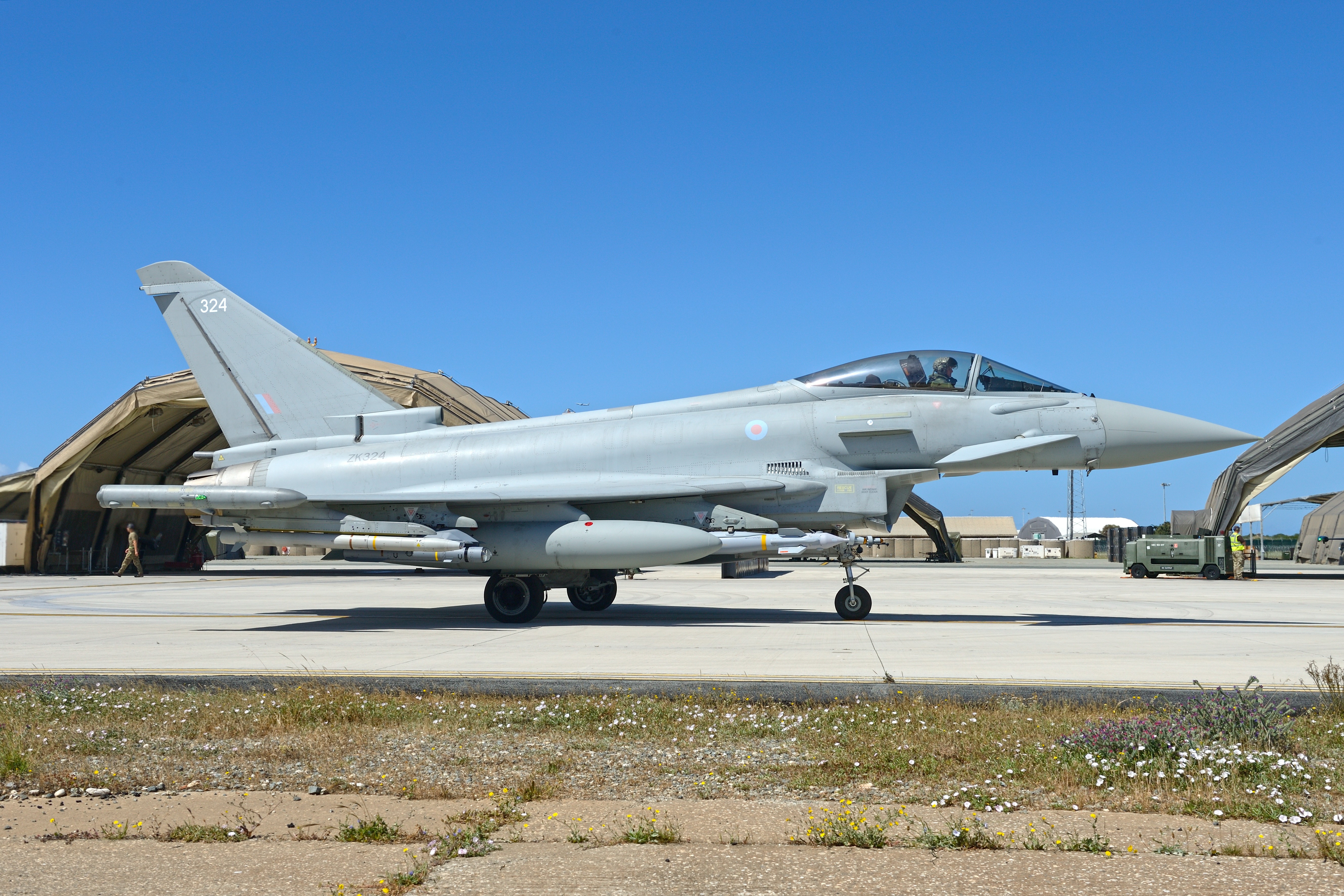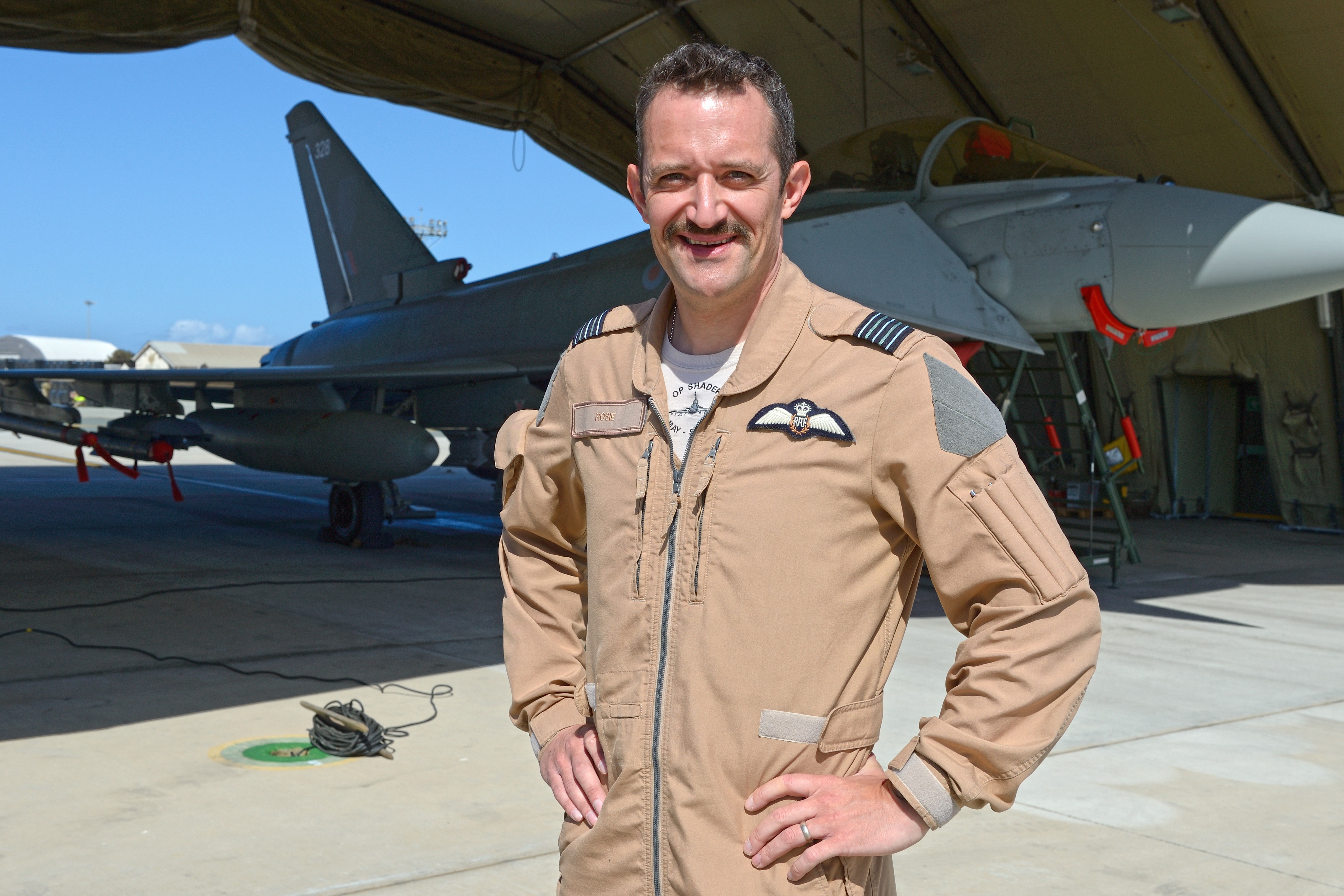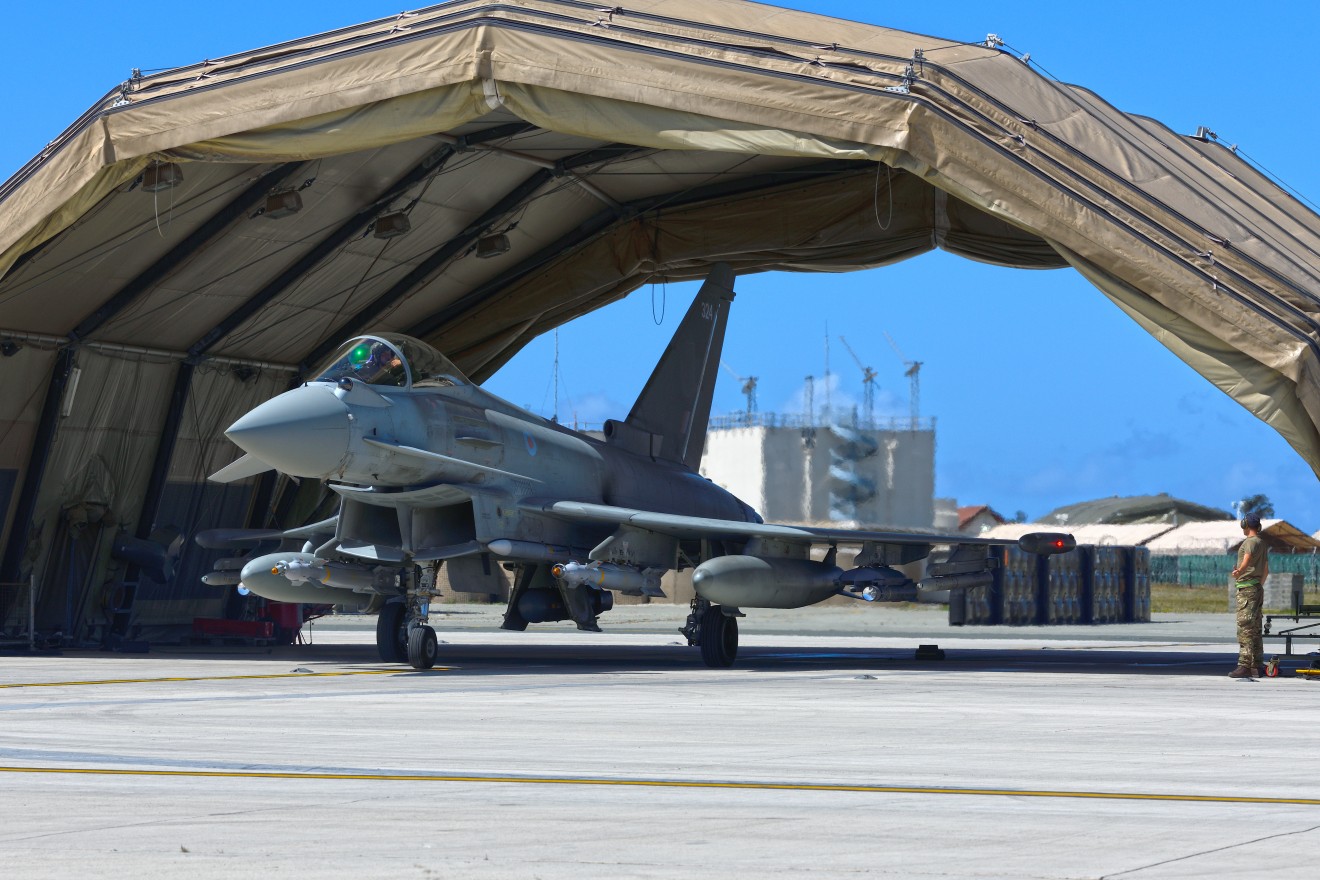Working six days straight in the heat of a Cyprus spring takes its toll on people and equipment alike. Fortunately, the two rows of protective shelters — knows as RESs (Rapid Erect Shelters) provide some respite from the glare of the Mediterranean sun’s rays for the teams that keep the resident fighters posed and ready for action.
At RAF Akrotiri, on a small peninsula of British Sovereign territory on the southern tip of Cyprus, the Royal Air Force operates a pivotal element of its Operation Shader, the UK spearhead for missions to eliminate so-called Islamic State (IS, also known as Daesh) since August 2014.
Eurofighter Typhoons have operated here constantly since December 2015, with the RAF’s front-line squadrons rotating in to man the detachment for a four-month period. They initially operated alongside Tornado GR4s on this particular mission for just over three years, and have now been joined by six F-35Bs from No 617 Squadron.
Whole Force
RAF Typhoons initially flew missions here carrying four Paveway IV bombs, plus AIM-120 Advanced Medium-Range Air-to-Air Missiles (AMRAAMs) for self-protection, working in concert with the proven Tornado GR4s. However, as retirement loomed for the combat veteran Tornados, attention turned to the Typhoons assuming the full range of combat air roles for the diverse Shader requirement.
Enter Project Centurion, which essentially provided a suite of capabilities for the Typhoon under an ambitious programme run concurrently by the RAF and industry as a ‘Whole Force’ concept that included the partnership of BAE Systems and weapons manufacturer MBDA.
Centurion was broken down into two main elements: Phase 2 Enhancement (known as P2E), which added the Meteor beyond-visual-range air-to-air missile and the Storm Shadow standoff cruise missile. It was then followed by P3E, which added the Brimstone 2 ground-attack missile.

The counter-IS mission has evolved significantly over the past five years, as the RAF continues to work closely with coalition partners. Gp Capt Jonny Moreton is the current 903 EAW commander at Akrotiri. “From a mission perspective, we are now flying mainly overwatch in support of coalition forces in Syria and Iraq. We’re still flying [six Typhoons] at the same rate, but it’s not as kinetic now.” Typhoons have flown a range of roles in both air-to-air and air-to-ground to help ensure 24/7 air coverage of the theatre.
For the front-line squadrons, Operation Shader is a four-month rotation, involving up to nine Typhoon pilots, plus operations staff and around 70 engineers at any given time. The Typhoons essentially act as non-traditional intelligence, surveillance and reconnaissance (NTISR) platforms that can ‘swing’ into a kinetic role if required.
Into combat
Wg Cdr Jim Lee is Officer Commanding No II(Army Cooperation) Squadron and led the debut ‘Centurion’ Shader deployment. “The ‘Centurion’ rollout began for the frontline RAF squadrons at the start of 2018 with Meteor followed by Storm Shadow as part of P2E,” he explained. “My squadron took on the Brimstone portion,” which followed under P3E.

The squadron participated in Exercise Saif Sareea in Oman as part of their workup for the deployment but they were still flying P2E-standard jets and Paveway IV. “We returned home in November [2018] and focused on Brimstone and the P3E,” said Lee. “We received a really good package in terms of the aircraft and procedures, which was good because we didn’t have long to train with it.” Lee was quick to praise the combination of industry and No 41 Test and Evaluation Squadron (TES), which worked in concert to deliver the capability as well as tactics to the front line.
“Brimstone is a laser-guided weapon, so you have to see the surface in order to employ it,” Lee continued. "The challenging part of certain target sets – especially if they’re moving – is using the Litening pod. You can practice the mechanics of the mission set in the simulator as that’s more about the fingers and thumbs, making sure you can track the target with the pod. With Brimstone you support the weapon all the way to impact.”
Clearly, porting Brimstone to the single-seat Typhoon needed a seamless human-machine interface to avoid overloading the pilot. In its previous integration on Tornado, the pilot would fly the aircraft while the weapon systems officer (WSO) executed the attack. “Our training was critical,” said Wg Cdr Lee. “My biggest concern was making sure pilots could use Brimstone safely, repeatedly and that we wouldn’t make any mistakes. Our delivery profiles are designed to maximise employment of the autopilot and the auto-throttle and we make use of that a lot more now because when the weapon is in the air you’re staring at the pod imagery.”
Wg Cdr Lee’s detachment assumed responsibility for the Shader mission on February 1, but rather than bring its own aircraft, the unit inherited the in-theatre assets from No XI (Fighter) Squadron, upgraded at Akrotiri with the new [P3E] software standard. The day No II(AC) Squadron took over the detachment they were flying in the new Brimstone fit.
First Brimstone missions
The initial combat use of Brimstone from Typhoon came in February, when the RAF was called upon to attack a small boat that was being used by IS fighters to cross the Euphrates River.
Wg Cdr Lee says: “The first Brimstone attack was by a junior pairs leader and he’d never fired a Brimstone before. It wasn’t our QWI [Qualified Weapons Instructor], he flew the profile perfectly, which was a ringing endorsement of the training and the overall package that we received from No 41 TES and industry. We trust the system and it works.”
On March 12, the Syrian Democratic Forces came into contact with IS forces in dispersed positions, and two Typhoons conducted a series of three attacks. In addition, a large number of vehicles had been abandoned in the area of the fighting, and one large truck was identified as having been booby-trapped with an improvised explosive device (IED). The Typhoons engaged the truck-bomb and destroyed it with a single Brimstone 2. Flt Lt Philip, a junior pilot, conducted that Brimstone firing. “I completed my combat ready workup in around six months and went straight into the Brimstone upgrade.” Referring to the specific engagement, he added: “A JTAC talked us onto the area. My flight leader only had Paveways, so it was down to me to prosecute the attack.”
It was a ringing endorsement of both the effectiveness of the cockpit avionics and the integration of this new weapon that both initial firings – by relatively junior pilots – were conducted so accurately and professionally. It came as a clear illustration of the end-to-end success of Project ‘Centurion.
